
A world's fair, also known as a universal exhibition or an expo, is a large international exhibition designed to showcase the achievements of nations. These exhibitions vary in character and are held in different parts of the world at a specific site for a period of time, typically between three and six months.

The Bureau international des expositions is an intergovernmental organization created to supervise international exhibitions falling under the jurisdiction of the Convention Relating to International Exhibitions.
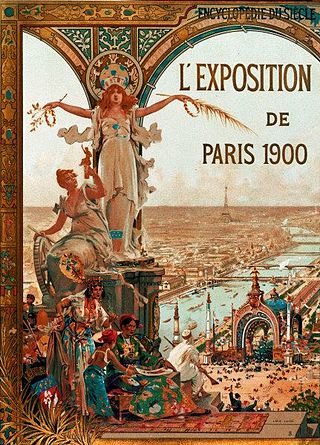
The Exposition Universelle of 1900, better known in English as the 1900 Paris Exposition, was a world's fair held in Paris, France, from 14 April to 12 November 1900, to celebrate the achievements of the past century and to accelerate development into the next. It was held at the esplanade of Les Invalides, the Champ de Mars, the Trocadéro and at the banks of the Seine between them, with an additional section in the Bois de Vincennes, and it was visited by more than 50 million people. Many international congresses and other events were held within the framework of the exposition, including the 1900 Summer Olympics.

World Expo 88, also known as Expo 88, was a specialised Expo held in Brisbane, the state capital of Queensland, Australia, during a six-month period between Saturday, 30 April 1988 and Sunday, 30 October 1988, inclusive. The theme of the Expo was "Leisure in the Age of Technology", and the mascot for the Expo was an Australian platypus named Expo Oz.
Taejon Expo '93 was a three-month international exposition held between Saturday, August 7, 1993 and Sunday, November 7, 1993 in the central South Korean city of Daejeon.

Expo 2005 was a World Expo held for 185 days between Friday, March 25 and Sunday, September 25, 2005, in Aichi Prefecture, Japan, east of the city of Nagoya. Japan has also hosted Expo '70 Osaka, Expo '75 Okinawa, Expo '85 Tsukuba, and Expo '90 Osaka and will host Expo 2025 Osaka.

Expo 2010, officially the Expo 2010 Shanghai China, was held on both banks of the Huangpu River in Shanghai, China, from 1 May to 31 October 2010. It was a major World Expo registered by the Bureau International des Expositions (BIE), in the tradition of international fairs and expositions, the first since 2005. The theme of the exposition was "Better City – Better Life" and signifies Shanghai's new status in the 21st century as the "next great world city". The Expo emblem features the Chinese character 世 modified to represent three people together with the 2010 date. It had the largest number of countries participating and was the most expensive Expo in the history of the world's fairs. The Shanghai World Expo was also the largest World's Fair site ever at 5.28 square km.

The Japan World Exposition, Osaka, 1970 or Expo 70 was a world's fair held in Suita, Osaka Prefecture, Japan between March 15 and September 13, 1970. Its theme was "Progress and Harmony for Mankind." In Japanese, Expo '70 is often referred to as Ōsaka Banpaku (大阪万博). It was the first world's fair held in Japan and in Asia

Expo 2008 was an international exposition held in the year 2008 from 14 June (Saturday) to 14 September (Sunday) in Zaragoza, Spain, with the theme of "Water and Sustainable Development". The exposition was placed in a meander of the river Ebro. It was coordinated by the Bureau International des Expositions, the organization responsible for sanctioning World's Fairs.
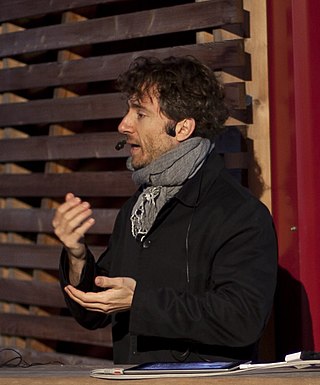
Thomas Alexander Heatherwick, is an English designer and the founder of London-based design practice Heatherwick Studio. He works with a team of around 200 architects, designers and makers from a studio and workshop in King's Cross, London.
Expo 2015 was a World Expo hosted by Milan, Italy. It opened on May 1 at 10:00 CEST and closed on October 31. Milan hosted an exposition for the second time; the first was the 1906 Milan International.
Grimshaw Architects is an architectural firm based in London. Founded in 1980 by Nicholas Grimshaw, the firm was one of the pioneers of high-tech architecture. In particular, they are known for their design of transport projects including Amsterdam Bijlmer ArenA railway station, Waterloo International railway station and the award-winning Southern Cross railway station which was the recipient of the Royal Institute of British Architects Lubetkin Prize. Grimshaw is behind the design of the Sustainability Pavilion, an innovative net-zero building, for Expo 2020. The firm currently has offices in Los Angeles, New York, London, Paris, Dubai, Melbourne and Sydney, employing over 600 staff.

The Expo Axis is one of the world's largest membrane roofs. It spanned the entrance and boulevard building of the World Exposition 2010 in Shanghai.
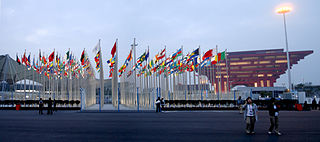
This article contains the details of the pavilions at Expo 2010. The 2010 World Expo Shanghai is the largest Expo site ever, covering more than 5.2 square kilometers and containing more than 70 exposition pavilions. More than 190 countries and 50 international organizations registered to participate in the 2010 Shanghai Expo. After the six-month run, the Expo had attracted well over 70 million visitors. The Expo 2010 is also the most expensive fair in the history of the World's Fair, with more than 45 billion US dollars invested by the Chinese Government.
Atelier One is a British structural engineering company, established in 1989 and based in London. The company has collaborated with architects, designers and artists, and has been described as ‘the most innovative engineering practice in the UK.’
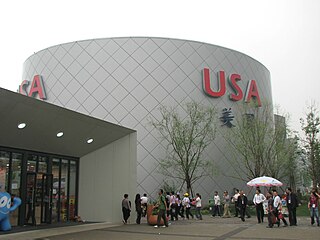
Despite the US being one of the last countries to sign a participation agreement with the Shanghai Expo, the USA pavilion at Expo 2010 in Shanghai, China became one of the most visited national pavilions at the six-month Expo.
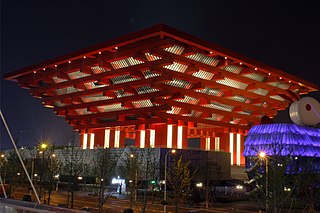
The China pavilion at Expo 2010 in Pudong, Shanghai, colloquially known as the Oriental Crown, was the largest national pavilion at the Shanghai Expo and the largest display in the history of the World Expo. It was also the most expensive pavilion at the Shanghai Expo, having cost an estimated US$220 million. The pavilion showcased China's civilization and modern achievements by combining traditional and contemporary elements in its architecture, landscaping and exhibits. After the end of the Expo 2010, the building was converted to a museum. On October 1, 2012, it was reopened as the China Art Museum, the largest art museum in Asia.
AKT II is a London based firm of structural, civil and transportation engineering consultants. It was founded as Adams Kara Taylor in 1996 by Hanif Kara, Albert Williamson-Taylor and Robin Adams. Now numbering over 350 employees, it is one of the largest structural engineers in London.

The China Art Museum, also called the China Art Palace or its original name, Shanghai Art Museum, is a museum of modern Chinese art located in Pudong, Shanghai. The museum is housed in the former China Pavilion of Expo 2010. It is one of the largest art museums in Asia.

The 2012 Summer Olympics and Paralympics cauldron was used for the Olympic flame during the Summer Olympics and Paralympics of London 2012. The cauldron was designed by Thomas Heatherwick and described as "one of the best-kept secrets of the opening ceremony": until it was lit during the Olympics ceremony, neither its design and location, nor who would light it, had been revealed. For the Olympics it consisted of 204 individual 'petals', and for the Paralympics 164, one for each competing nation.
















